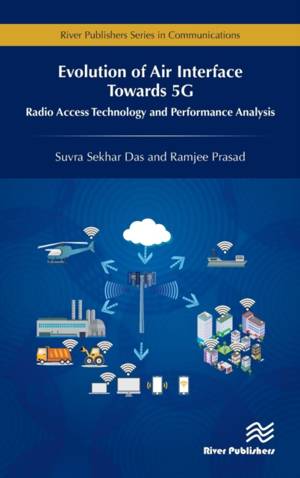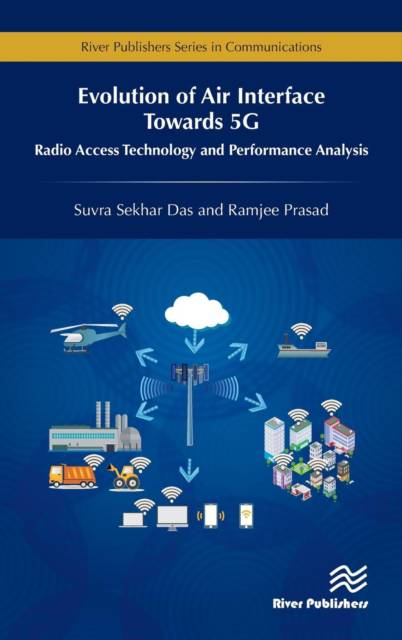
- Retrait gratuit dans votre magasin Club
- 7.000.000 titres dans notre catalogue
- Payer en toute sécurité
- Toujours un magasin près de chez vous
- Retrait gratuit dans votre magasin Club
- 7.000.0000 titres dans notre catalogue
- Payer en toute sécurité
- Toujours un magasin près de chez vous
Evolution of Air Interface Towards 5G
Radio Access Technology and Performance Analysis
Suvra Sekhar Das, Ramjee PrasadDescription
Over the past few decades, wireless access networks have evolved extensively to support the tremendous growth of consumer traffic. This superlative growth of data consumption has come about due to several reasons, such as evolution of the consumer devices, the types of telephone and smartphone being used, convergence of services, digitisation of economic transactions, tele-education, telemedicine, m-commerce, virtual reality office, social media, e-governance, e-security, to name but a few.
Not only has the society transformed to a digital world, but also the expectations from the services provided have increased many folds. The last mile/meters of delivery of all e-services is now required to be wireless. It has always been known that wireless links are the bottleneck to providing high data rates and high quality of service. Several wireless signalling and performance analysis techniques to overcome the hurdles of wireless channels have been developed over the last decade, and these are fuelling the evolution of 4G towards 5G. Evolution of Air Interface Towards 5G attempts to bring out some of the important developments that are contributing towards such growth.
Spécifications
Parties prenantes
- Auteur(s) :
- Editeur:
Contenu
- Nombre de pages :
- 296
- Langue:
- Anglais
- Collection :
Caractéristiques
- EAN:
- 9788793609815
- Date de parution :
- 02-08-18
- Format:
- Livre relié
- Format numérique:
- Genaaid
- Dimensions :
- 156 mm x 234 mm
- Poids :
- 589 g

Les avis
Nous publions uniquement les avis qui respectent les conditions requises. Consultez nos conditions pour les avis.






